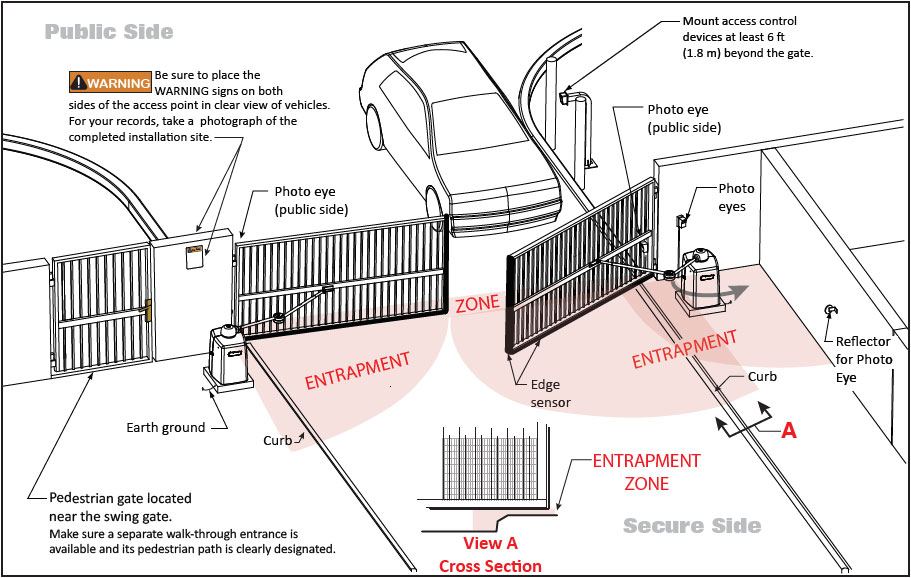Preventable Accidents
Modern life has brought about many great innovations that help automate our lives and make routine and mundane activities such as opening a gate easy and effortless through automation.
Modern life has brought about many great innovations that help automate our lives and make routine and mundane activities such as opening a gate easy and effortless through automation. With mechanical and technological advances comes new and sometimes unanticipated hazards which may expose the average person to harm. Designing and specifying automated gate systems requires a balanced approach between security and safety.
Accidents between pedestrians and users of automated gate systems are avoidable if the hazards are addressed in the design and specification phase of a project. By understanding the causes and hazards that may be present in a gate system during the design phase a specifier can help prevent accidents before they occur.
There are the three main avoidable mistakes that lead to injury and death in automated gate accidents that can be avoided if accounted for in the design and specification stage of a project.

Entrapment
A gate that is not designed to minimize entrapment zones between the gate panel and other solid objects that the gate passes by like the fence line, walls, concrete barriers, bollards, etc. can pose a serious threat to those users that may be near the gate during its operation. If the gate opens near or towards another solid object and it creates a gap that is less than 16” between the gate and that object then that is an area where a person’s body part or body could become entrapped between the gate and the obstruction.
Open pickets that are spaced more than 2.25” apart also allow for someone to reach through and become entrapped by the gate. Pickets that protrude beneath the gate panel more than .5” can grab clothing and pull a person into an entrapment zone where injury could occur.
Gate Hardware
Exposed cantilevered gate wheels, guide rollers, V-Track gate wheels and other gate hardware can pose a hazard to appendages like fingers, hands, arms, legs and feet. To avoid accidents be sure to specify an experienced gate manufacturer who uses quality gate hardware. Established gate fabricators will provide the covers for their gate hardware and it is up to the installer to ensure it is used and installed properly.
Gate Operator Mechanics
Mechanically operated gates have been installed on properties ranging from personal residences to critical infrastructure like military bases for the last 40+ years. Many gate operators were designed, built and installed before safety standards were developed and implemented. Hazards that are inherent in some gate operator designs are exposed belts and pulleys, exposed chains and sprockets, and operators built without an internal entrapment sensor. Be sure to specify a gate operator that has been both tested and listed under the UL 325 standard.
The HySecurity Specification Sales Team is here to help you ensure your automated gate project conforms to the latest revisions of UL 325 and ASTM F2200. Feel free to contact us and we can discuss your particular project in depth.
Earn your HSW credits!
Schedule an AIA CES approved lunch and learn with a specification engineer today.